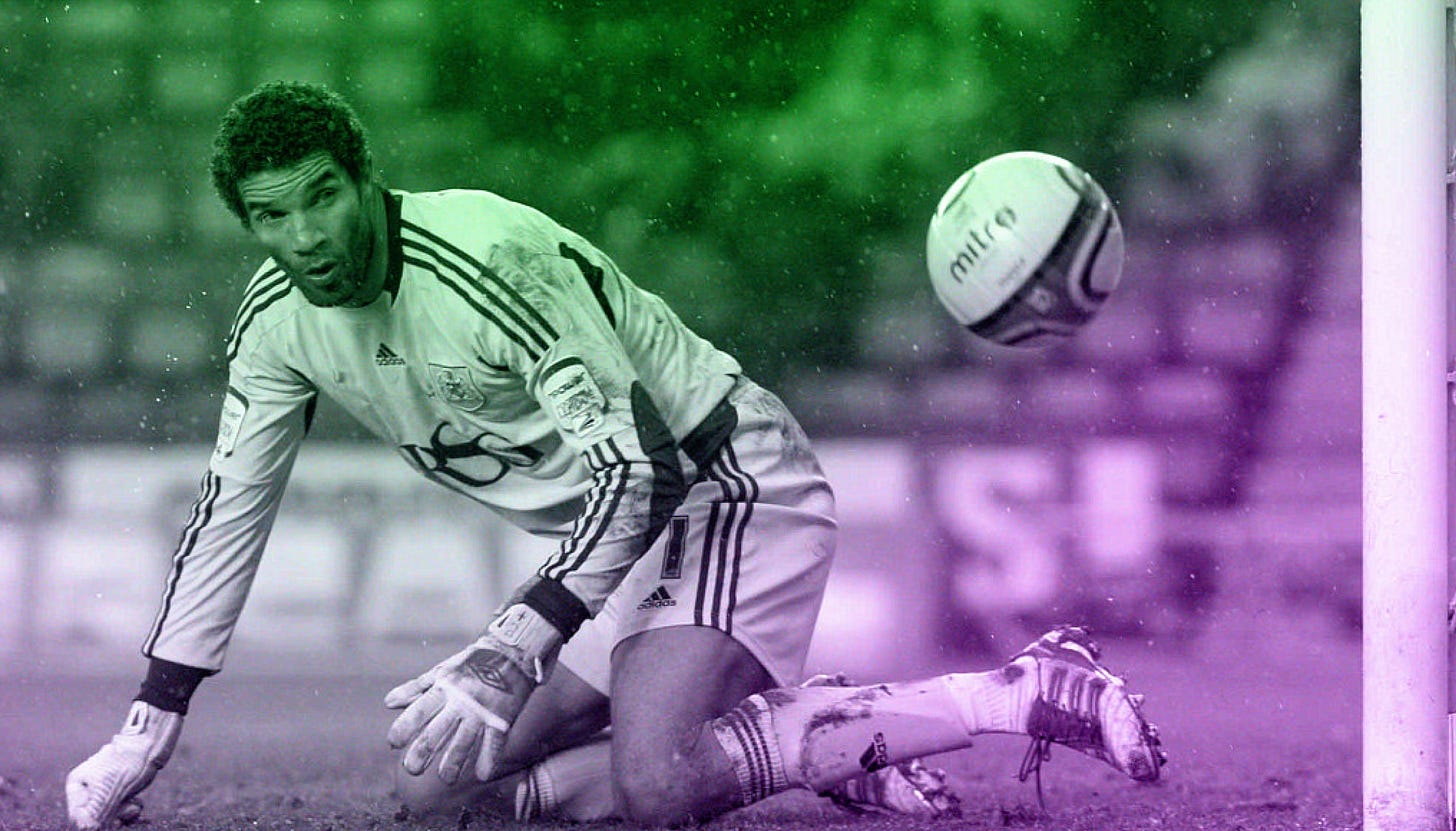The forgotten hero behind Bristol City's academy success.
Amy Kington, Sean O'Driscoll and the race towards category two status.
Article by Fred Dodgson.
At Gerhard Struber’s introductory press conference, it took just two minutes and forty seconds for the new City boss to be quizzed on his approach to the academy. His reply was earnest, talking of a personal “mission” to embed homegrown players into the first team, though there would be “no presents” for youngsters unable to meet the standard.
A short moment later, Jon Lansdown was asked if, despite last season’s success under Liam Manning, he was ultimately left disappointed to see a lack of academy involvement. “It’s an incredibly important part of the football club” answered Jon, “there’s no hiding from that”.
In spite of a rare fallow season for breakthroughs from the undergrowth last campaign, it is no surprise that a flourishing academy has come to be so core to the being of Bristol City.
Through periods of both financial austerity and high spending across the last decade, it is homegrown talent and burgeoning young players that have saved City’s skin, plugging holes across the pitch and generating millions in profit. Arguably, it has been the most crucial facet in City’s route to an established second tier status.
As Struber looks to script a new era of youth success at Bristol City, this week's newsletter takes you back to where it all began.
In 2013, after years of short-sighted strategy had culminated in City engulfed by record debt and finishing rock bottom of the Championship, a push towards sustainability saw the board looking to overhaul a drifting youth set up that, for years, had struggled to develop first-team ready talent.
Step in Amy Kington. After being entrusted into the role of academy manager from her successes in the community trust, it was the South Bristolian’s achievements that, in Jon Lansdown’s words, stopped academy players from “falling off a cliff” when nearing first team age, and set the wheels in motion for the likes of Tommy Conway, Lloyd Kelly and Antoine Semenyo to shine in later years.
Her triumph? Leading the setup towards meeting 100% of the Elite Player Performance Plan requirements: the 2011 established youth development scheme which introduced an academy hierarchy, ranked by the ‘categories’ we know today. In six frantic months, Kington took City’s academy from an idling category 3 to a category 2 ranked programme set up for success.
“We needed to get that status” recalls Amy to OSIB, “the future of football, not just at Bristol City, but for the region, was dependent upon us being able to operate at that level”.
“It has an impact on what fixtures you play” she continues, “who you compete against, what level of coaches you can attract in the future, what kind of players you can bring in. It's not just a tick box exercise. This has a long lasting effect on the future”.
When ex-CEO Mark Ashton, at the time a club consultant, called Amy to ask for a recommendation on an academy manager up to the task, she had just the candidate in mind. “I cheekily phoned him back the next day and said, ‘yep, I've got the person for you… I'm gonna do it.’”
“‘You won't find anybody that loves this football club more”, the Knowle native told Ashton, “‘that understands the landscape of the city, that understands the region, that understands the nuances of what it takes to run this club. So I'd like to have a go’”.
An offer brimming in self-confidence, but given Amy had already led the community section of the football club into an opportunity-filled, profit turning foundation for the football club (a stark contrast to the way the rest of the debt-swamped business was operating), the board were in no position to turn her down.
Indeed, it was their mismanagement that had led to the need for an overhaul of City’s youth set up in the first place.
Despite the early 2000s bringing a more viable approach to progress, including an influx of locally developed youth slotting into the first team (Brown, Doherty, Coles, Hill… the original breakthrough generation of City’s modern setup), standards demanded by a return to Championship football in 2007 saw spending spike and a reliance on local talent beginning to diminish.
And after City came within one game of the Premier League in 2008, sustainability began to take a dangerous back seat.
Signings repeatedly appeared to seek the name over the substance, and ranged from the plain bonkers (like the wage ceiling smasher of England keeper David James), to the invasions of sub-standard journeymen (Neil Kilkenny, Stephen Pearson, even the ghost of ex-Chelsea midfielder Jody Morris).
Unsurprisingly, the strategy sparked decline. As ages and wages rose, league positions did the opposite. By the end of the 2012-13 season, City were back in the third tier, fan-club relations poisonous and matters at Ashton Gate as bleak as they’d been since the millennium rolled over.
When Amy stepped in as academy manager, it became clear that the youth programme had not been spared by the deterioration taking place around it. “I probably thought it was going to be easier than it was”, she admits, “I don’t want to criticise anything that came before me, but it was a lot to unpick”.
She continues: “The vision, the strategy, the management, the leadership, the programs… it all just needed to come up. [For example] the facilities. We were operating out of porta cabins with no electricity on the footprint of SGS College. Now you look at the facilities that are in place and it’s a world apart from where we started”.
To make matters worse, the mandate set by EPPP auditors meant that Amy had just six short months to lift the setup to category two standards, or City’s academy revival would be heavily delayed. It was a process that would have to be achieved against the odds.
“We didn't have a lot of time” she explains, “and the officials that were going to be assessing us told me, at that moment in time, that we had a 40% chance of passing. I needed to get us to 100%, because there's no room for teetering on the edge. It's either a pass or it's a fail. It's category two or it's not”.
“I needed to get there very, very quickly”, she affirms, “to mobilise the cavalry that were in there and focus on what that looked like. It was really good in some respects, because when your back is up against the wall and people know that they're seen as the underdog in this, they probably do want to prove to themselves that they can do it”.
She decided to play a “statistical game”, splitting her staff across each underperforming section and implementing a meticulously detailed set of plans which could not afford to fall short. Such was the required speed of the task, Amy recalls the relentlessness of the work taking its toll on occasion.
“People did make sacrifices. There were times where people didn't see their families, because actually, this was really important. The nature of football means that you’re already working unsociable hours, and that coupled with maintaining the operation meant you were doing all things at the same time”.
The job, says Kington, relied on the strength of the collective. The executives around her, sports science teams and coaches would all have a part to play in unison. Although, there is one individual she singles out: Sean O’Driscoll, City’s enigma of a head coach who held the role for just 10 months in 2013.
Despite overseeing a poor period on the pitch, it has often been noted (even by succeeding managers) that O'Driscoll played a vital part in forming the foundations that City have built on ever since. Where the progress of the academy is concerned, he is described by Amy as her “biggest ally”. In particular, Kington remembers O’Driscoll’s astuteness on the all important day EPPP auditors arrived to assess progress.
“He was amazing”, beams Amy, “literally, amazing. One of the things that you can do in football is lean into your friendships, but Bristol City was not that kind of club. We didn’t know these auditors, it wasn’t something we could do. It was going to be very difficult. They are there to ensure you are challenged, to ensure you meet all requirements. But when they came in to do the interview, Sean took over.
He was fantastic. It was so interesting to see the intelligence. To not only answer their questions beautifully but to flip it back around to them, to challenge them because some of the things in the process weren’t as he thought they should be. I’ve never been in an interview quite like it”.
There is little doubt that Amy’s appointment was culturally brave. No female had previously taken the role of academy leader, and it is a sport where women scarcely hold leadership roles at all. She has previously said she could “write a book” about the barriers she faced in football.
It was therefore O’Driscoll’s attitude towards her personally that also won her praise. “If you think about what I look like, who I am, some managers may have found that very difficult. Appointing me was a brave thing to do, but Sean was my biggest supporter. I’m not sure I would have had as easy a ride without that support”.
In early summer, Amy would receive the confirmation just a half year from her start date that - against the odds - Bristol City were the brand new beneficiary of a category two academy. For the best young talent of Bristol and the region, entering the setup of their local club was now not just a romantic option, but a viable one.
Swiftly after forwarding the news to Steve Lansdown, a “constant supporter” of the process, the driving force of the operation came to a surprising decision. She stepped down.
“My job was done”, says Amy. “I had achieved what needed to be achieved. I’m not a coach, all I would have been involved in was maintenance. And I like being a change-maker”. True to her word, Kington is now the co-founder/CEO of ‘Community of Purpose’, a platform which transforms disadvantaged young lives in Bristol.
Re-igniting the academy project, she says, will “always be” the highlight of her career. “You’ve seen what it's produced, and how that has benefited the club with the deals that have been done. When you recruit Bristolians, they care for the club, they care for the city. And I feel really, really proud that I was a part of that”.






